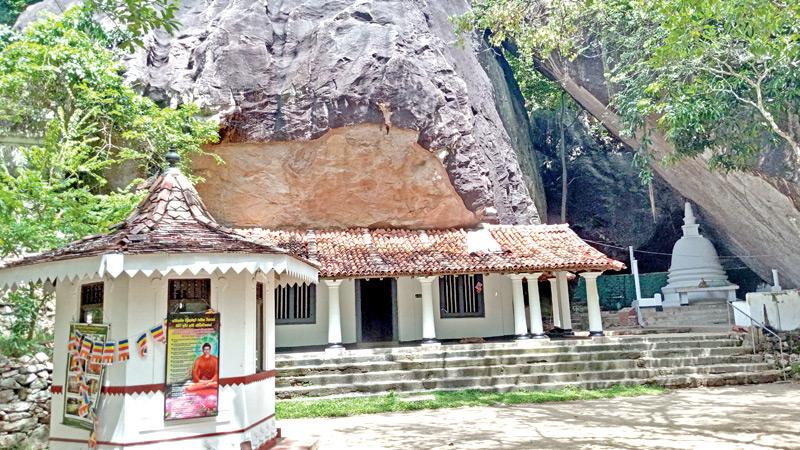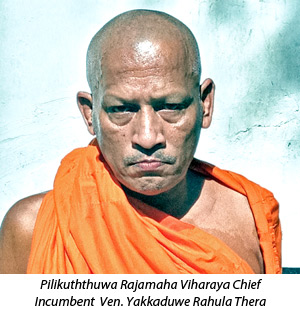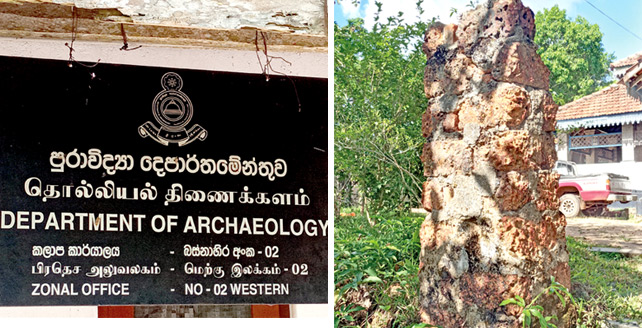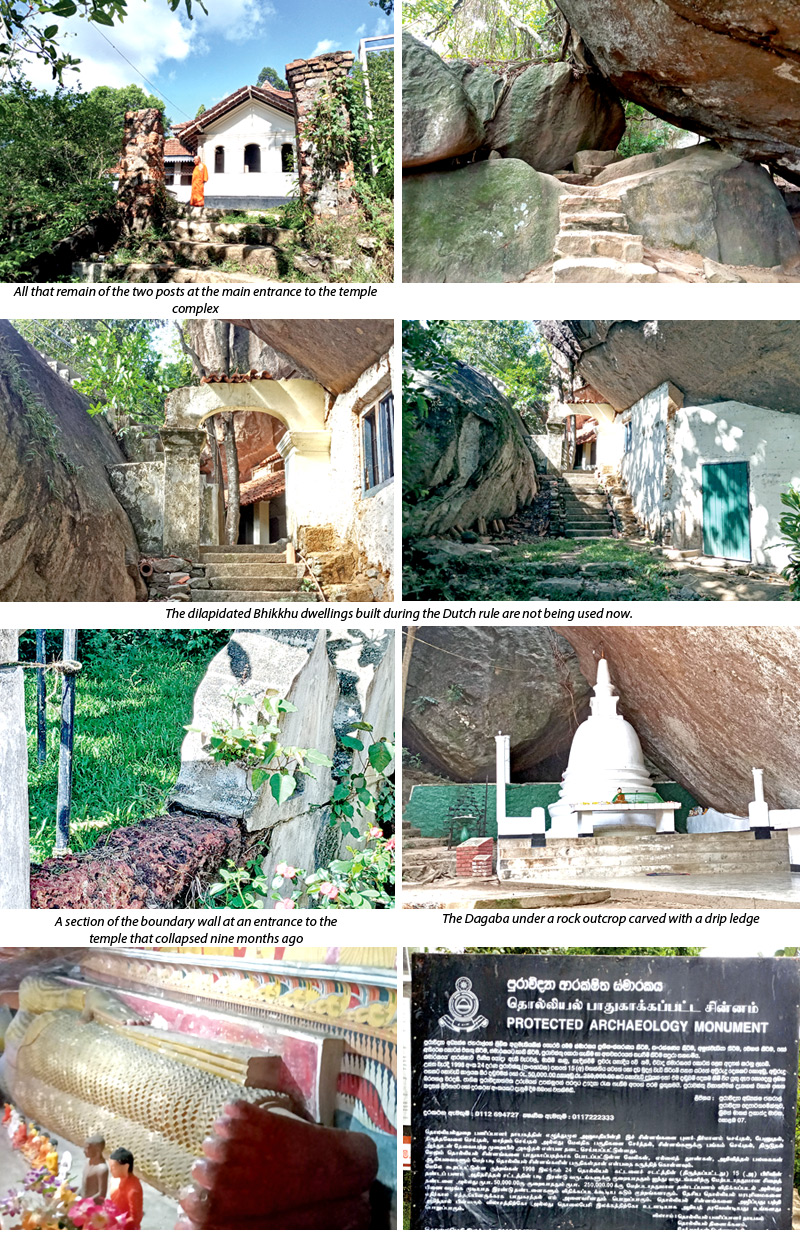
 Pilikuththuwa Rajamaha Vihara Chief Incumbent Ven. Yakkaduwe Rahula Thera said that even though the number two zonal office of the Department of Archaeology in the Western Province is in the temple complex, the Department of Archaeology has not carried out the much needed restoration of the murals, the residence halls built during the Dutch rule and the surrounding walls of the ancient temple complex.
Pilikuththuwa Rajamaha Vihara Chief Incumbent Ven. Yakkaduwe Rahula Thera said that even though the number two zonal office of the Department of Archaeology in the Western Province is in the temple complex, the Department of Archaeology has not carried out the much needed restoration of the murals, the residence halls built during the Dutch rule and the surrounding walls of the ancient temple complex.
Ven. Rahula Thera said that it is almost nine months since part the wall at the entrance to the temple complex fell off and requests for its restoration have fallen on deaf years.
Outer shrine room
 The restoration of the mural of the 12 zodiac signs drawn on the roof of the outer shrine room should be given priority. The paintings in the inner shrine are believed to have been done in the early 1870’s.
The restoration of the mural of the 12 zodiac signs drawn on the roof of the outer shrine room should be given priority. The paintings in the inner shrine are believed to have been done in the early 1870’s.
The bhikkhus’ dwelling section believed to have been built during the time of Dutch rule is also in need of repair.
The Pilikuththuwa Rajamaha Vihara is in the Pilikuththuwa Grama Niladhari Division in Mahara, Gampaha.
The history of the Pilikuththuwa Archaeological monument is said to date back to the pre historic era as Archaeologists believe that the nearly hundred or so rock caves that are on the hilly terrain that borders the temple complex probably were the dwellings of stone age man.
It is believed that drip ledges to the cave entrances may have been carved in the 2-3 BC at which time the caves became the abodes of bhikkhus.
Protected monuments
The image house of the temple was declared as a Protected Archaeological Monument by the Director General of Archaeology on November 1, 1996 while all the caves with drip ledges, the Bhikkhu dwellings Awasageya, the wooden bridge, the pond, the Dagoba with drip ledged cave and stone inscriptions belong to the temple were declared as protected monuments in 2002. The preaching hall Darmasala was included in to the list on April 15, 2016.
The Antiquities Ordinance and subsequent amendments prohibit the renovation, repairing, overhauling, adding new parts, damaging, stealing of artefacts and excavation within a protected archaeological monument without the written authority from the Director General of Archaeology.

